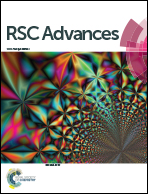Enhancing the antifouling property of polyethersulfone ultrafiltration membranes using NaX zeolite and titanium oxide nanoparticles
Abstract
In this study, polyethersulfone (PES) ultrafiltration (UF) membranes with antifouling properties were prepared using NaX zeolite and TiO2 nanoparticles as hydrophilic inorganic materials for use in the separation of oil-in-water emulsions. The nanocomposite PES membranes were fabricated via two different methods, i.e. entrapping of the TiO2 and zeolite nanoparticles into the PES matrix by solution blending and coating these nanoparticles on the surface of the PES membranes which were previously modified by the corona air plasma treatment. For this purpose, the NaX zeolite and TiO2 nanoparticles were synthesized by microwave-assisted hydrothermal technique. The separation performance and antifouling resistance of the PES membranes were also evaluated by the UF permeation tests of pure water and oil-in-water emulsions. The results showed that the fouling tendency of the membranes prepared by the solution blending method remarkably decreased, however the permeation flux of these membranes was lower than the neat membrane due to the changes in the morphology and structure caused by introducing the nanoparticles. The PES UF membranes with reasonable separation performance and excellent antifouling properties could be prepared by the coating technique without a significant change in the membrane morphology and structure.


 Please wait while we load your content...
Please wait while we load your content...